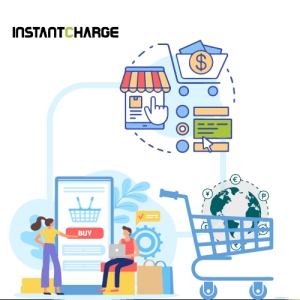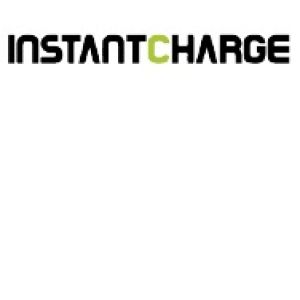Payment Gateway For Ecommerce For Providing Instant Online Payment Solutions To Ecommerce MerchantsPosted by instantcharge on August 29th, 2022  A simple definition of an Payment Gateway For E-commerce is the exchange of money online or the payment of products or services online. In essence, it's just a way to handle transactions electronically. Using the internet to enable a direct database link between the parties purchasing and selling the product. This entails handling information from the buyer's selected payment method, typically a credit or debit card, an e-wallet, or a checking account. Online payments are extremely common and are predicted to reach 700 billion in 2020. Since they are so easy and convenient to use. At the click of a button, money is transmitted to its intended recipients, often even instantly. However, in order to take online payments, the vendor must put up a complicated and secure system on the backend to provide usability that results in a great user experience. A merchant must collaborate with a payment partner in order to accept online payments.This takes us to the many types of systems used in the processing of payments. What is a payment processor?A ecommerce payment processor acts as a go-between for the bank taking part in the transaction and the merchant. By ensuring that the buyer's account has enough money in it. There are no restrictions on it, or the card is still valid, this service provider validates and authorizes the payment before transferring the funds to the seller. This applies to both in-person and online payments made through websites (performed on card swipers). Your payment processor can take care of the security of your payment setup given the stringent security rules that are in place for online payments, such as the PCI Compliance standard. This will be accomplished by making sure that all transactions take place over secure, encrypted connections. Or, in the case of subscription payments, by managing the protocols required to guarantee recurring, secure invoicing. How Payments Do Made Online Work?You might be interested in learning more about how an online transaction functions now that you are aware of the components. The typical online payment procedure is as follows:
In essence, that's how businesses instantly accept credit cards online. Generally speaking, the steps are the same, with some exceptions. For instance, some clients enter their payment information directly on the website of merchant. While others are forwarded to the website of the payment processor. How Can I Safeguard Online Transactions As a Merchant?You can use a variety of strategies as a merchant to guarantee the security of your payment system. In addition to reminding customers of the advantages of online payments. Instruct them in safe online payment methods and the work your business is doing in this area. Make your website/app users feel secure Show off the signals that indicate you are a merchant who is concerned about security. Use an SSL/TLS certificate that will automatically show the padlock image in the browser's address bar, which customers associate with safe transactions. The certificate should also include payment method icons that your users are familiar with and trusts, such as Visa, Mastercard, or PayPal. Keep users informed By updating customers on the status of their order, shipment information, and previous orders. The entire online payment process becomes more transparent and fraud efforts are more likely to be thwarted. Look over your orders Take steps to periodically examine your orders to maintain control over them. By doing this, you can find out if your systems have been the target of any suspicious activities or fraud efforts. Stay in line Take all required actions to guarantee that payments are made in accordance with the norms. And the laws that apply in the marketplaces where you are selling. Your efforts in terms of compliance can be optimized by working with a qualified payment service provider. Employ 3D Secure gateways. With two-factor authentication, not only does it add an extra degree of protection, but it also shields retailers against unwarranted chargebacks. Make an address verification system operational (AVS) Ask your payment processor if you may activate AVS for your online store. Due to the fact that thieves typically do not have access to the billing addresses of stolen/cloned cards, this additional verification step may reduce the number of fraud attempts. Although we've talked about it, there are many mechanisms in place that have led to significant advancements in the sector in recent years. Despite the fact that the security of online payments may still be a concern for merchants and customers. Although the sheer number of security procedures that must be put in place may seem overwhelming, dependable partners like banks or payment service providers can relieve the merchant of much of this complexity. In order to steadily strengthen your online security setup, start by identifying the gaps in your present arrangement. Using An InstantCharge Payment Gateway For Ecommerce Can Help Make Higher SalesThe ability to accept card payments into one's own bank account is provided by a merchant account. A bank or other financial institution known as an "acquirer," which the merchant partners with, is a registered participant in card networks like Visa or Mastercard. A merchant account is more common among medium-sized or larger-sized businesses because it requires adhering to rules established by card associations and has some costs. Startups and smaller companies frequently choose the more straightforward Payment Service Provider option such as Instantcharge. Choose Instantcharge for your Payment Gateway For eCommerce business and start getting higher sales margins for your business. Like it? Share it!More by this author |


